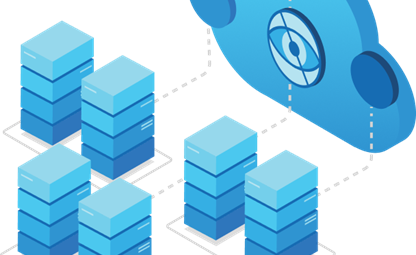11 Dec 2018
The Link Between DevOps and NoOps

With the rise of artificial intelligence and machine learning, the tech community is witnessing a journey from DevOps to NoOps, where in-house teams are no longer required as IT environments become increasingly automated. Eric Schmidt, chairman of Google's parent company Alphabet, predicts that one day NoOps will become mainstream. Sadly, some have misinterpreted that to mean that NoOps will replace DevOps. In reality, a NoOps model would simply mean changing a company's focus from conducting operational tasks to running applications. Here are in fact some of the forces playing a pivotal role in the link between DevOps and NoOps.
Machine Learning
NoOps uses AI to handle IT operations and eliminates the need for humans to oversee them, augmenting DevOps through cloud automation. Machines to be sure are on their way to resolving issues that will enable them to make effective decisions on their own. They'll also be able to produce diagnostic information to make problem solving easier and to lower engineering expenses. Developers could then focus on business requirements while Internet providers would handle scalability and infrastructure. Though companies will still need such operations, fewer operational tasks would be required.
Serverless Computing
The concept of serverless computing has been gaining traction for some time now. It may confuse some people since servers have always been used in traditional computing. Why even have serverless computing? Patrick Malatack, Vice President of Product for Twilio Functions, a serverless environment designed to accommodate Twilio code, said that developers and clouds management companies should focus on enhancing the customer experience instead of managing an array of servers.
When you write APIs or web applications, you can initiate serverless computing by simply ignoring the infrastructure that powers the hardware. It could in fact be a simple code, which, once it's been configured, can be uploaded to the cloud. Major serverless-oriented services include Amazon's AWS Lambda, Microsoft Azure Functions, and Google Cloud Platform along with Google Cloud Functions. One reason NoOps will probably go mainstream is that serverless architecture has become more popular largely because of its simplicity. As Michiel Rook, a computer programming consultant at FourScouts in the Netherlands, says, "Serverless is one more step towards 'NoOps.'"
Containerisation
Containers like Docker and Kubernetes have pervaded the cloud for some time. Implementation of applications has increased, thereby boosting the need for containers. Businesses recognise the necessity for containers, as they provide heightened scalability and help diminish the risk of cyberattacks. And while they're not crucial for DevOps, they're excellent tools that confer benefits to DevOps and their workflows. Despite that, they do have their limitations. For instance, any information in the containers is deleted when they shut down. And putting information in containers can be slower than implementing them.
Nevertheless, containers are a perfect fit for NoOps. Its future in fact may depend on them. Businesses, therefore, will continue to increase the use of containers. Software engineers and developers are using containers innovatively, which guarantees they'll have more reasons to choose this particular technology. A survey of software professionals found that many have great expectations from containers. Of those who have been evaluating containers, sixty-four percent feel they'll continue to be environmentally stable, 56 percent count on containers deploying quickly, 51 percent expect a level of portability, and 48 percent said they anticipate a greater degree of scalability.
Microservices
Microservices architecture has become more and more popular with the development of Infrastructure as a Service (IaaS) and Platform as a Service (PaaS). It centers on developing parts of applications that emphasise specific tasks or services, making them better able to work with each other because of its robust APIs. Its development teams are independent, providing a decentralised approach toward software. Consequently, speed and accountability are increased. Using the cloud to deploy current microservices applications as well as creating new ones would help unravel the intricacies of monolithic architecture into small, workable elements as containers are adopted and only important pieces of software that depend on others are displayed.
When its high level of speed, reliability and scalability is considered, along with its APIs and container ecosystem, all linchpins of the DevOps philosophy, it's not hard to see why startups have been eager to adopt this architecture. In fact, Amazon, Twitter, Netflix, PayPal, and eBay are a few of the companies that were quick to realise this when they implemented the microservices model.
For more information on the relationship between DevOps and NoOps, please contact us.


